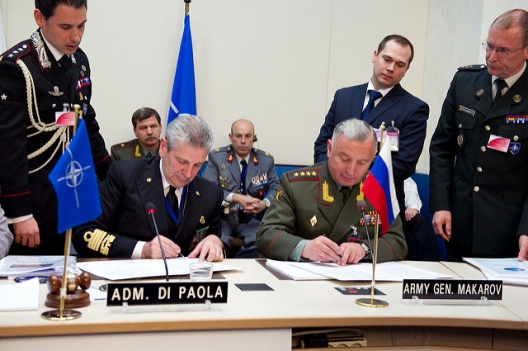 [O]nly a more visible presence will make a renewed emphasis on dialogue meaningful, signaling to Russia that NATO will not be intimidated by Moscow. And only a clear commitment to dialogue will allow all Allies to back a stronger defensive posture. …
[O]nly a more visible presence will make a renewed emphasis on dialogue meaningful, signaling to Russia that NATO will not be intimidated by Moscow. And only a clear commitment to dialogue will allow all Allies to back a stronger defensive posture. …
[D]emonstrating that attacking one of NATO’s frontline states literally means an assault on all of NATO requires a multinational presence that goes significantly beyond the decisions taken at the Wales Summit. The Russian government needs to understand that it will not reach its goals by threatening its neighbors and testing NATO’s resolve. Although U.S. efforts to support the Eastern flank are crucial, it would be advisable to integrate as much as possible under a NATO umbrella. This would not only signal the united stance of NATO, but would also be seen as less threatening by Moscow. Moreover, the respective host countries should be supported in strengthening their own armed forces. While it makes sense that other Allies police the Baltic air space, they can expect the member states that feel particularly threatened to invest more in their own defensive capabilities, including necessary infrastructure such as airfields that multinational reinforcements would require. Among the Allies on the Eastern flank, only Estonia and Poland fulfill the NATO commitment to spend two percent of their GDP on defense.
NATO must also get better at getting its message across. Above all, this means that national leaders have to be more vocal and stress the differences between Russian and NATO policies. All information fact-sheets published by the NATO bureaucracy will not suffice if national politicians do not actively make the case for the new posture. In some member states, governments try to avoid a public debate on the revamped efforts, portraying them as minor adaptations. This allows for misinformation and misinterpretations. Media reports sometimes claim that the NATO-Russia Founding Act generally rules out the stationing of troops in NATO’s “new” member states although the wording tells a different story. Few even mention that NATO publishes all its exercises on its website and invites Russian observers. Russia, in contrast, regularly surprises NATO with snap exercises and ignores proposals to heighten transparency although numerous close encounters between the Russian military and Western military units or even civilian airliners have highlighted the danger of escalation. And while NATO members discuss the deployment of a few battalions, Russia has already announced that three new divisions will be created in its Western military district. For every NATO soldier on the Eastern flank, there will be roughly five to ten new Russian troops. This is hardly an escalation by NATO.
By avoiding public debate to explain and defend NATO’s new posture, national leaders endanger the long-term stability of the Alliance. Some opinion polls already show that the public support for the collective defense commitment is fragile. This is dangerous because deterrence only works if it is credible. But domestic support for deterrence will only be secured if the Alliance convincingly demonstrates that it is not interested in confrontation. It thus needs to offer dialogue, propose additional arms control steps, and think about a long-term perspective for NATO-Russia relations.
Tobias Bunde is Head of Policy and Analysis at the Munich Security Conference and Research Associate with the Center for International Security Policy at the Hertie School of Governance in Berlin.
Image: Adm. Giampaolo Di Paola and Gen. Nikolay Makarov, May 4, 2011 (photo: NATO)
